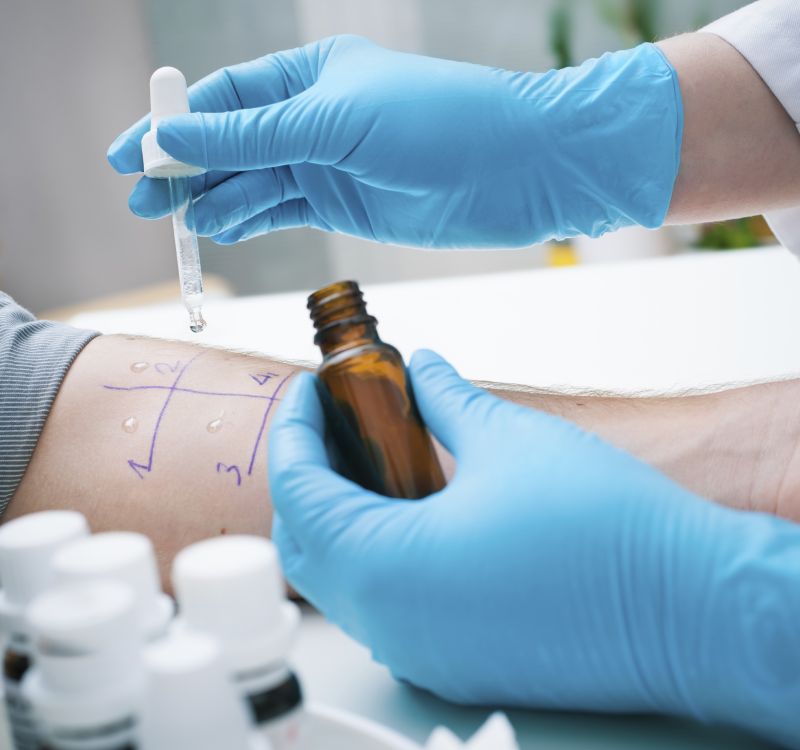
Pollen and Mold Counts for July 09, 2025: Total Count = 11,901
Trees: ABSENT (Actual count: 0)
(Reference Range: low = 0-14, moderate = 15-89, high = 90-1500 measured in grains per cubic meter of air)
Boxelder/Maple: 0
Alder: 0
Hackberry: 0
Privet: 0
Birch: 0
Pecan/Hickory: 0
Red Cedar: 0
Ash: 0
Sweetgum: 0
Walnut: 0
Mulberry: 0
Pine: 0
Sycamore: 0
Cottonwood: 0
Oak: 0
Elm: 0
Willow: 0
Hornbeams: 0
Weeds: LOW (Actual count: 2)
(Reference Range: low = 0-9, moderate = 10-49, high = 50-500 measured in grains per cubic meter of air)
Lambs quarter: 2
Grasses: LOW (Actual count: 2)
(Reference Range: low = 0-4, moderate = 5-19, high = 20-200 measured in grains per cubic meter of air)
Molds: MODERATE (Actual count: 11,897)
Alternaria: 33; Ascospores: 6969; Basidiospores: 0; Cladosporium: 424; Curvularia: 16; Diatrypaceae: 4243; Helminthosporium: 33; Epicoccum: 0; Fusarium: 49; Nigrospora: 49; Periconia: 0; Pithomyces: 16; Rust: 0; Smuts: 49; Stemphylium: 16; Torula: 0; Spegazzinia: 0; Tetraploa: 0; Aspergillus/Penicillium: 0
(Reference Range: low = 0-6,500, moderate = 6,500-13,000, high = 13,000-50,000 measured in spores per cubic meter of air)

Testing
Allergy testing is used to find out what substance, or allergen, may trigger an allergic response in a person. The two most common types of allergy testing used are skin testing and RAST testing. Skin testing is usually done because it is rapid, reliable, and generally less expensive than RAST testing, but either type of test may be used.
- Skin testing – Typically, the skin is lightly pricked with the small amount of the suspected allergen first and may be followed up with injecting the allergen just below the skin. Most of the allergy testing we perform is skin testing.
- Patch testing – This form of testing can be if the patient has eczema and the results were negative on the skin test, or if the patient has contact dermatitis. After 48 hours, the patches will be removed. The physician will read the test at both 48 and 96 hours. (Patches are usually placed on a Monday, and read on a Wednesday and Friday)
- RAST testing – This form of testing involves drawing blood and looking for antibodies that the body might make in response to allergens. These blood tests are not as sensitive as skin tests but are often used for people who are not able to have skin testing.
- Food challenge – This form of testing is used in the case of Food Allergies (see Food Allergy)

Treatment
Our physicians can diagnose allergies by obtaining a complete history of symptoms and conducting allergy testing. Once a specific diagnosis is made, the physician can treat the disease in several different ways, depending on the nature of the allergy:
- Antihistamines – to treat the “itchy,” “sneezy,” “allergic” component of allergies
- Anti-inflammatories – to treat the swelling, inflammatory component of allergies
- Environmental modification – making changes in flooring, air conditioning, or humidity
- Allergy desensitization – used to gradually expose the patient to increasing doses of the allergen to eventually “desensitize” them to the allergen
- Allergy Injections (Immunotherapy) – generally used for indoor/outdoor environmental allergens.
- Sublingual tablets – a new treatment option that can be used for some indoor/outdoor environmental allergens
- Oral Immunotherapy – used in the case of food allergy (see Food Allergy)
- Drug desensitization – used in the case of drug allergy (see Drug Allergy)
- Sublingual Immunotherapy

Resources
Download the Visionary Allergy Tracker App from the Apple App Store or Google Play Store.
Our office will provide our patients with the code needed to access.

Allergies
- Head: Sinus and Nose, Ears, Throat – Nasal allergy, Polyps, Sinusitis, Ear Trouble, Hoarseness, Sore Throat
- Medication/Drug Allergies – Antibiotics, Anesthetics, Pain Medications, Topical Medications
- Life Threatening Allergic Reactions – Anaphylaxis
- Insect Allergies – Bee, Wasp, Yellow Jacket, Hornet, Fire Ant
What is an allergy?
An allergy occurs when your body overreacts to a substance that generally does not cause symptoms in most people. A substance that triggers an allergy is called an allergen. There are many types of allergens, including pollen, molds, house dust, foods, medicines, pet dander and insect venoms.
How do I get an allergy?
Each person can vary greatly in what they are allergic to. You can be born with an allergy or even develop the allergy over time. Regardless of how the allergy originated, allergens can come in contact with the body in several ways:
- Inhaling/Breathing
- Eating
- Injection
- Skin contact
Once the body is exposed to the allergen in one of the previously mentioned ways it can cause reactions in people that are allergic, resulting in a variety of symptoms.